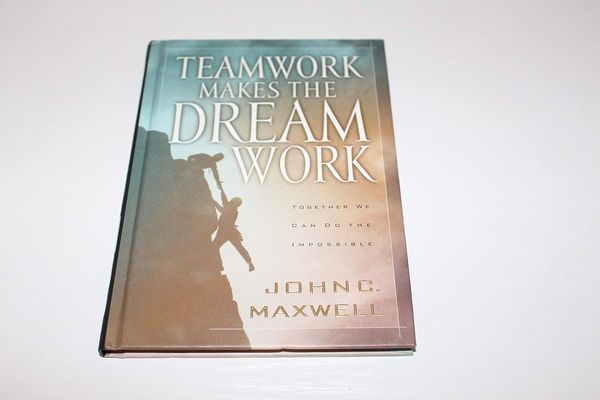For financial advisors who aspire to develop a specialization, finding and serving a client niche can be a strong competitive advantage. It also can seem like a challenging endeavor in the initial stages of the process.
To learn how it’s done, we spoke with Landon Yoshida, Vice President, Wealth Management and Principal at Irvine, California-based Apriem Advisors, who has built a successful client niche of his own. We asked Yoshida to describe his niche in detail, how he developed the niche and his advice for advisors seeking to do so themselves.
WSR: Please describe the general demographic profile for the type of wealth management client that you specialize in serving.
Yoshida: The demographic profile of those we serve are hard-working oil refinery folks who make gasoline, diesel and jet fuel for a living. The majority finished high school, went directly to work in the refinery or went to serve in our nation’s armed forces.

They are skilled pipe fitters, welders, boilermakers and carpenters. Our client population retires from companies such as ExxonMobil, PBF Energy, Chevron and Marathon Petroleum. (ExxonMobil and PBF are the majority of those we serve.)
When we meet them, many are in their mid-50s and contemplating retirement. Their questions are, “When can I retire? When should I start Social Security? Will I have enough?” Many of them have never worked with a financial advisor and simply went to work, saved through their 401(k) plans, accumulated company stock and earned a pension.
They lived various distances from their work, some across the street, some a two-hour drive away in rush hour traffic. Their shifts were four days on, three days off. Some worked nights, some days, some rotated back and forth between the two. It was amazing to see these men and women work to keep their production going 24/7.
WSR: Please recount how you developed this niche.
Yoshida: I was reading an industry newsletter when I stumbled upon a story that featured an advisor who focused on retirees from the local phone company. The website was called Horsesmouth, and the article described an advisor who was determined to help local retirees from the telecom/phone company. He found he best served the linemen, who put up the poles and connected the fiber optic cabling.
In addition to this article, I was in the FA training program at Merrill Lynch with a colleague. I remember he had started a niche with aerospace workers and retirees. I observed his process and he also helped encourage me to pursue a focused client base. At the time, I still had no idea how I would get this going.
Around 2006, I received a phone call when I was two years into my career at Merrill Lynch in Orange County, California. A family friend of mine served in the Air Force during the Vietnam War. He asked if I could help his friend and fellow pilot, who went on to work at a local oil refinery. This friend needed help to ensure he could retire from his job after 30 years making gasoline, diesel and jet fuel.
I thought about what I would like to see a financial advisor do for my own family. What would be a difference I could offer? How would I stand apart from competitors? I decided to offer meeting them at their home and make house calls. It would save them time rather than driving to my office. With the information I would need to gather, most of those documents should be with them at home.
Also, the setting would (I hoped) be more comfortable for me to meet them. I ended up earning their trust and helped navigate his retirement from ExxonMobil. There were thick pension packets to review, notary for spousal consent, deciding between monthly pension or lump sum, etc. It was daunting for an employee to navigate on their own, not to mention for me too.
I had never seen these packets and had to ask a lot of questions on the phone with their human resources department. Thankfully, this client allowed me to take the time necessary to understand and advise his family properly.
From the first client who trusted me at the refinery, the connections started to come, albeit very slowly, because I was doing my best to focus on relational activity instead of transactional activity. My vision was to build lasting relationships with these retirees and their families, and hopefully this would grow organically through referrals. The speed of client onboarding however, was too slow for the sales goals set by my firm at the time.
I was put on probation because I was not meeting their quarterly AUM goals. I vividly remember being summoned to my manager’s office to sign a probation document. If I did not meet the requirements next quarter, I would be out of a job. I still have this probation notice to this day, laminated to remind myself to never forget where I came from.
That first client invited me to his retirement party. ExxonMobil generously hosted an event where the retiree would invite friends and family to attend. Their manager at the plant spoke about their career and presented them with a framed photo of the refinery, signed by all their co-workers. It was a classy, thoughtful celebration, and that is where the organic growth started. I was introduced as the financial advisor for this recent retiree, people asked for my business card, and from there things moved forward.
Over the following years, one became two, became four, then 16. As I attended more retirement parties and met more co-workers, my reputation started to build. In total, during the first 10 years, I onboarded approximately 35 to 40 families. Once I reached that level, the growth felt exponential. I have been serving this client population for over 15 years now and have more than 100 families linked to that one location in Torrance, California.
WSR: What advice would you give to advisors who are seeking to develop their own client niche?
Yoshida: Keep in mind that people pay for differences, not similarities. Find and develop a way that differentiates you from other advisory firms. I discovered that Net Unrealized Appreciation was unique and could benefit many of the oil workers I began to meet. I studied how this strategy could help them, and found it began to set me apart from other advisors who would cold call or invite them to steak dinner seminars.
My dear friend and mentor told me that “there are riches in niches.” He had built his business focusing on a niche market and encouraged me to focus my energy and time to build up my blue collar clientele. Once I had developed this service market, at Schwab Impact a few years ago Michael Kitces was talking about how the most successful advisors will be those who specialize.
My mentor was so right. When you become the subject matter expert, it will take a lot of time in the beginning. There are clients we serve today whom I met 10 years prior to them onboarding with us. You must embrace and believe in serving first and selling second.
If you help someone achieve what they want, they will do everything to help you get what you want. Our clients wanted to see their old friends after retirement. I realized that they would ask how their friends were doing, since they knew I was advisor to many other folks from the same refinery.
Since 2012, we have hosted an annual reunion lunch to gather our clients together so they can spend time with their friends. Spouses attend and there is no sales pitch or agenda, besides thanking them for allowing us to serve them. It has grown every year and ends up being a source of new referrals. We allow our clients to sell for us.
Furthermore, go from ‘me’ to ‘we.’ I started off on my own, with some help at my branch office. Fast forward to 2023, I have learned that to serve our clients well, one person is not enough.

Dr. John Maxwell wrote a book titled, “Teamwork Makes the Dream Work.” This book and his lectures have been instrumental in my thought process building this client service niche. Dr. Maxwell believes that when you bring together unique skills and experiences, working toward a common goal, you can achieve more than the sum of individual contributions.
There is very little chance that someone can be an effective advisor to 100 clients by themselves. Maintaining relationships, research for portfolios, placing trades, compliance, estate planning, forecasting the “what ifs” of life – all of these and more are what clients expect and should receive from their advisors. I noticed that many times clients were working with “advisors” but only received investment management, and lacked the comprehensive coverage that wealth management implies.
I realized that an approach beyond the original team at Apriem could achieve much more and generate tremendous growth over time. That has played out in the past five years. We have brought on more advisors to complement each other. Skills in tax and estate planning, strong communication on camera and in front of clients, knowledge about insurance. It all adds up and clients take note.
The majority of our meetings with clients are done in twos. We believe there is a measurable benefit in having more than one person from our Apriem team with clients in every meeting. Having an extra pair of eyes and ears is key to delivering exceptional client service. As one of my mentors told me, “you have one mouth and two ears, so listen, listen and listen some more.”
Chris Latham, Managing Editor at Wealth Solutions Report, can be reached at clatham@wealthsolutionsreport.com














